Hedge fun: The Italian Renaissance garden of Château d’Ambleville
So many châteaux (manor houses, mostly, but also palaces and castles) litter the French countryside that today some can be purchased for a relative song. We were not looking to buy, however, but merely to visit a couple of châteaux in mid-June, after our tour of Monet’s garden in Giverny earlier in the day. Château d’Ambleville was only 17 kilometers away, so we hopped in our rental car and headed over.
The 16th-century château was constructed on the foundations of a medieval castle, and it’s certainly picturesque with its telescoping turrets. When we arrived, however, we learned we’d missed the last guided house tour of the day (at least two hours earlier than the website-posted closing time of 5 pm). Tickets to see the garden — listed as a Remarkable Garden of France — were offered instead.
I brightened at the prospect of a garden tour rather than a musty old castle tour. Done! We entered the garden alongside an old stone wall smothered in pink roses.
There’s so much history in these old homes and gardens. According to Wikipedia, the house was acquired in the 17th century by the Duke of Villeroy, ambassador of France to the Medici family in Italy. Inspired by Florentine gardens, he came home and created a garden in the Italian Renaissance style. Over time, the garden fell into ruin. Three hundred years later, in 1928, the Marquise de Villefranche bought the house, and she turned her attention to the garden, remaking it in the style of Villa Gamberaia’s garden in Florence. Nearly a hundred years have gone by since then, and today’s owners are working to restore the garden once again, reconstructing the missing parts from old photographs. They’ve done a lovely job so far.
You enter the garden at its lowest level, stepping through an arched doorway in a hedge to enter the Garden of the Moon. Low clipped hedges outline panels of lawn and frame a central water feature, while colorful perennials and roses border the perimeter paths. But what grabs your eye first is a curved green hedge at the rear of the garden, with clipped balls on top and arched windows framing statuary.

The design was inspired by a 1502 painting, Triumph of the Virtues, also known as Minerva Expelling the Vices from the Garden of Virtue, by Andrea Mantegna. Note the arched hedge with the clipped balls on top.
A long grassy path lined with catmint, Jerusalem sage, and orange daylilies leads the eye to an opening in the hedge that frames a statue. Let’s head that way.
Catmint cloud
Catmint, Jerusalem sage, and daylilies — all familiar plants from home.
Jerusalem sage
Yellow and lavender via Jerusalem sage and catmint
Finally I reach the terracotta statue in the hedge doorway.
Stepping past her, I gaze out at a pastoral view: lawn, stone wall, and mown meadow.
At the back of the hedge, there are other windows to peek through, and a semicircular pond in front of the hedge is revealed.
The tall hedge seems a bit playful and frivolous with those improbable puffballs on top. The theatrical drama of it all reminds me of portions of Lotusland. Terracotta figures gaze out from the arched windows.
A pair of sphinxes guards the pond’s edge.
Close-up view
In the center of the garden, a sculpture of a boy blowing a horn anchors a circular pool.
A closer view
From every angle, the hedges frame long views ending in a focal-point sculpture or other feature.
Two rectangular reflecting pools bracket the circular pool and lead the eye to a tiered waterfall fountain cascading down a grassy hill.
An arched stone wall above the fountain echoes the arched hedge. Benches up there offer a place to look out on the garden from above.
Small details, like a fern growing in a mossy wall, are as lovely as the overall scene.
‘Rozanne’ geranium, luminous against shades of green
At the end of one long axis, this tiered ornament — I’m not sure what it is — sits in a shady nook.
A long stair leads up to the next level of the garden.
Side view of the tiered fountain. I love all the greens and shapes: conical, spherical, rectangular, with tree-capped rolling hills in the distance adding their own rounded form.
From the overlook above the fountain, you can admire the overall design of the Garden of the Moon.
A serene allee of stately trees runs along the top of the hill. In the distance, a slender pedestal planter draws you forward.
A low stone wall defines the garden’s edge, with a view of fields and woods beyond. What a lovely borrowed view, or maybe this is part of the estate’s property.
Moss cushions the top of the old stone wall.
From here you enjoy a back view of the curved hedge with balls on top. It would be interesting to see time-lapse photos of how the hedge was planted and clipped over time to create this effect. And what a job it must be to keep it neatly clipped — it’s very tall!
The allee path is a shady respite between the hedged Garden of the Moon and the topiary-lawn of the Garden of the Sun, seen here from the side.
Entering the Garden of the Sun is like stepping onto a chessboard. Tiered topiaries, like oversized chessmen, are arranged across a neatly mown lawn. In the spring, I read, masses of daffodils outline chessboard squares around the topiaries. But in mid-June it’s all shades of green. The main axis leads the eye to an urn and stone bench backed by a wavy hedge.
Reaching the end, you can admire the classical urn on a plinth and rest on the bench, with a playful, caterpillar-like hedge making a green backdrop.
Bench detail
A red rose seems to be trying to mend a picturesque gap in a simple wooden fence. In the distance, partially hidden by topiaries, you glimpse the château.
Looking back along the central axis in the other direction, a statue centered in a hedge gap creates a focal point…
…that draws you back toward the house and through the hedge.
On the other side — wonderful hedging and framing.
The backyard of the château is an expansive lawn with huge, clipped boxwood balls that frame a blue-gray door.
Pink roses add to the rustic romance of the weathered blue door and flared stone steps.
A side garden entices with clipped hedges like framing curtains and a view of a curved stone bench.
Other parts of the garden back here are still being restored, but we found a fun surprise: a small-scale reproduction of Michelangelo’s David and a handy plinth on which to create a living echo with my own David. I give you the Davids.
A circular pool framed by green hedges is an elegant focal point at the end of the boxwood-ball path. A statue of Atlas sits in the center.
All it needs is a large metal orb in the planter.
What a treat to stumble upon this lovely Italian Renaissance-style garden while exploring the French countryside near Giverny. I’m impressed that the owners have done so much to restore the gardens, and I can’t imagine how much work and money it must entail, especially with the house to keep up too.
Coming up next: A historic potager at Château de La Roche-Guyon. For a look back at Monet’s flowery garden in Giverny, click here.
I welcome your comments; please scroll to the end of this post to leave one. If you’re reading this in a subscription email, click here to visit Digging and find the comment box at the end of each post.
_______________________
Digging Deeper: News and Upcoming Events
Give a listen to Hothouse, “a new podcast about design, ecology, and the way we garden now,” hosted by Austin landscape designer Leah Churner. Tune in for her in-depth and insightful interviews with regional gardening experts like Central Texas Gardener‘s Linda Lehmusvirta, author Jenny Peterson, and designer Colleen Dieter. As with my own Garden Spark speaker series, Hothouse is cultivating gardening conversations for thinking gardeners (as I like to call us) in the Austin area.
Join the mailing list for Garden Spark Talks! Inspired by the idea of house concerts, I’m hosting a series of garden talks by inspiring designers and authors out of my home. Talks are limited-attendance events and generally sell out within just a few days, so join the Garden Spark email list for early notifications. Simply click this link and ask to be added.
All material © 2006-2018 by Pam Penick for Digging. Unauthorized reproduction prohibited.


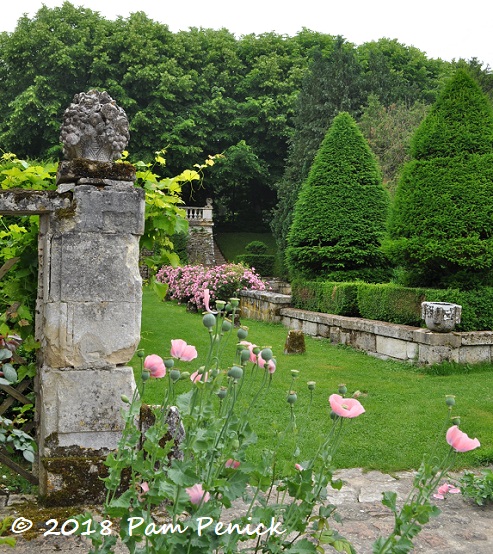
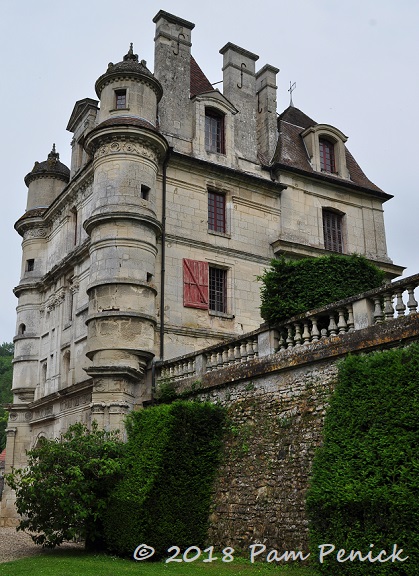
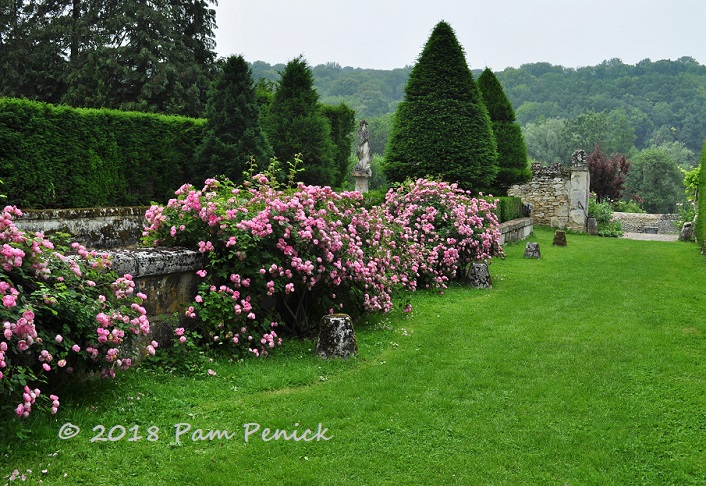
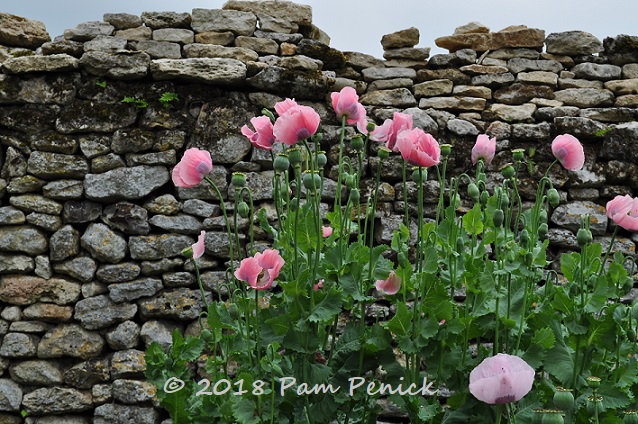
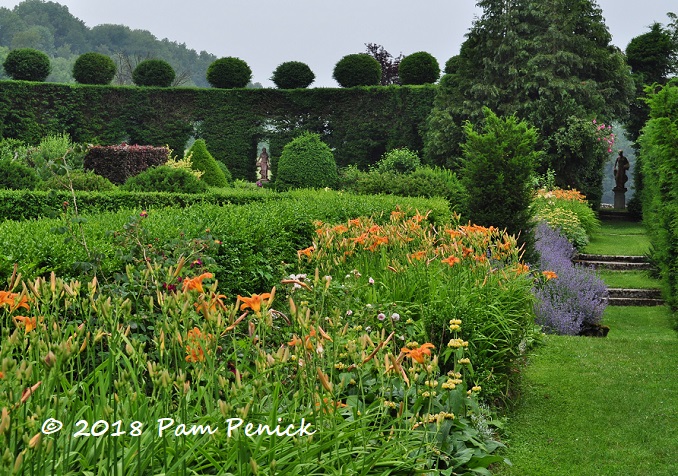
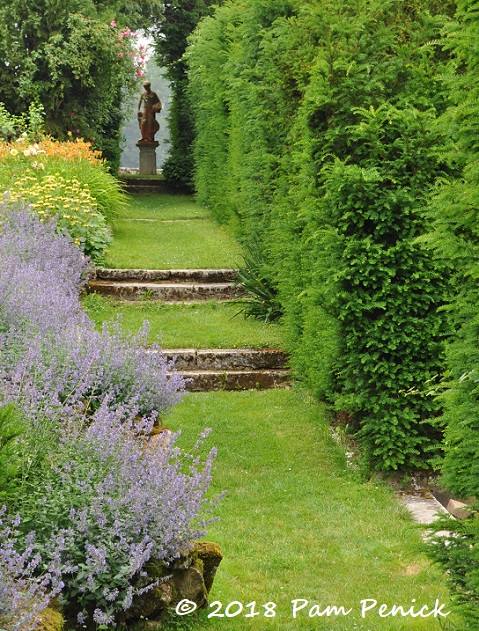
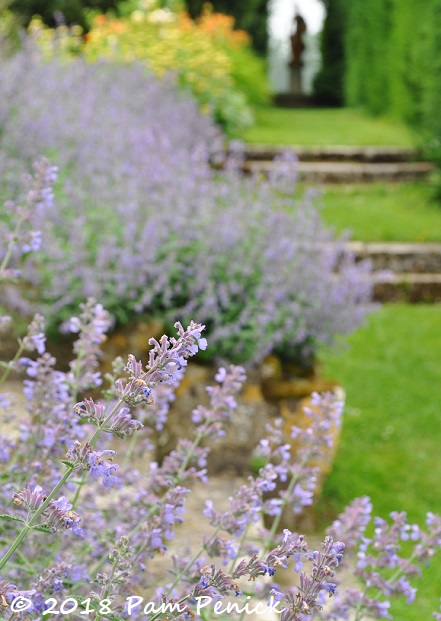
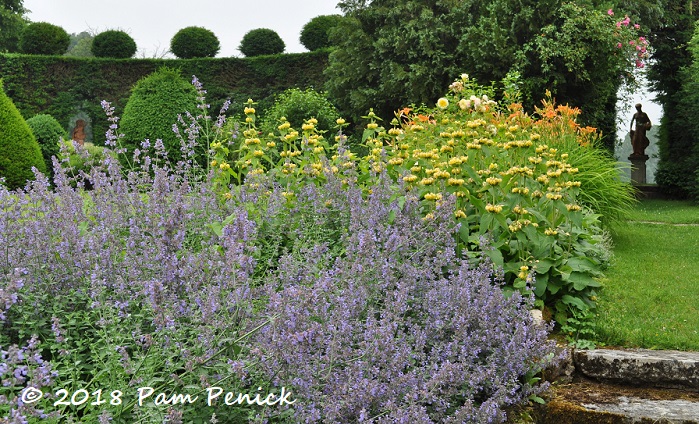
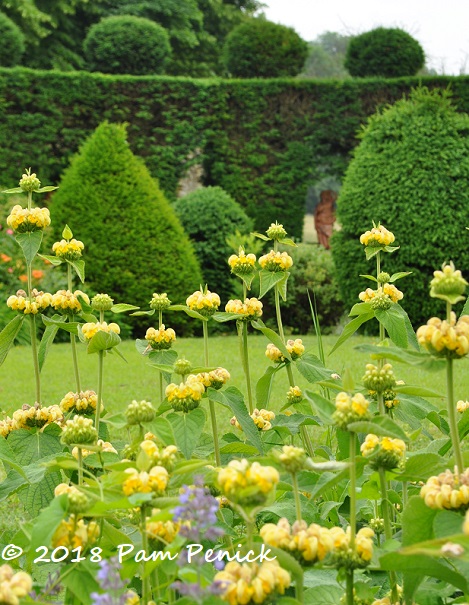
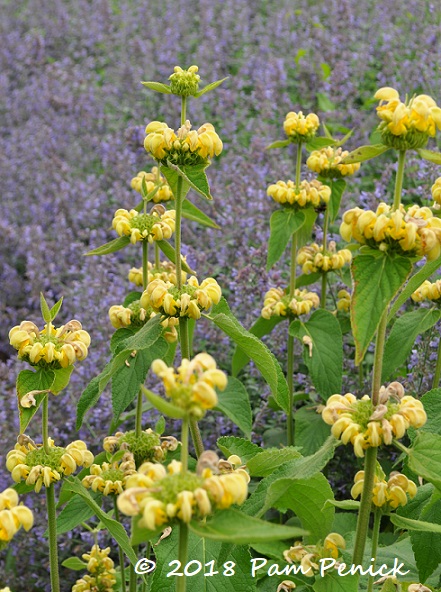
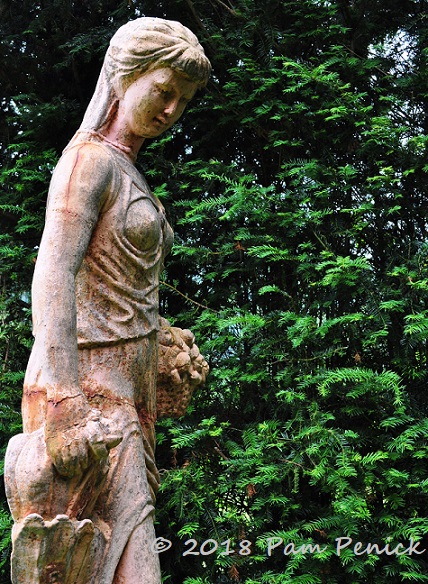
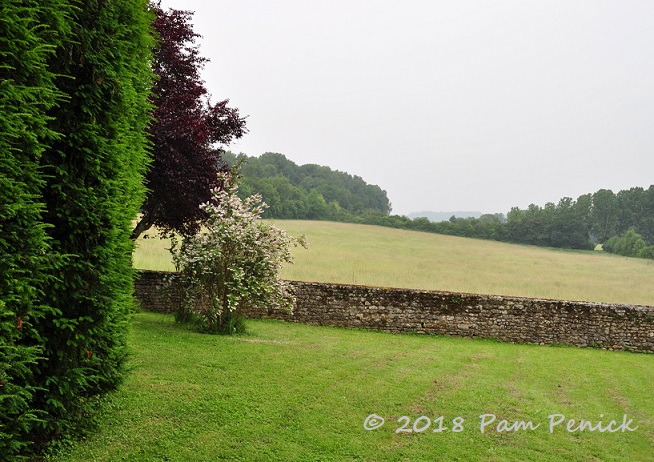
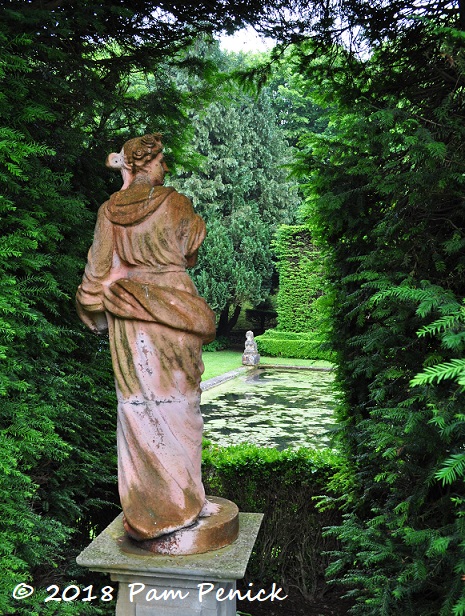
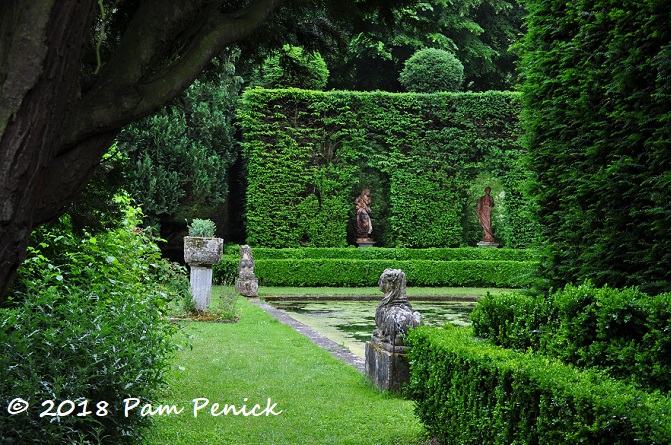
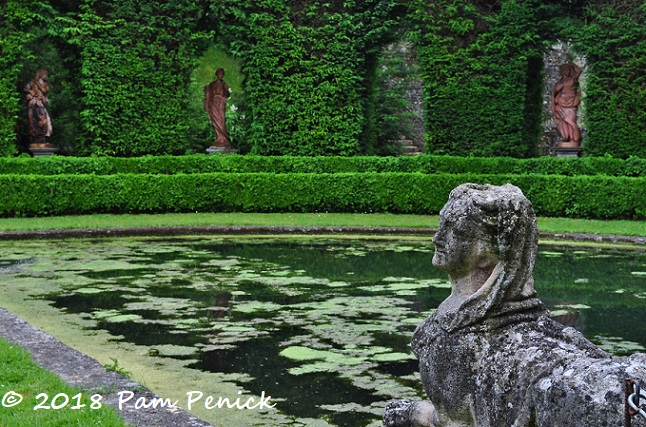
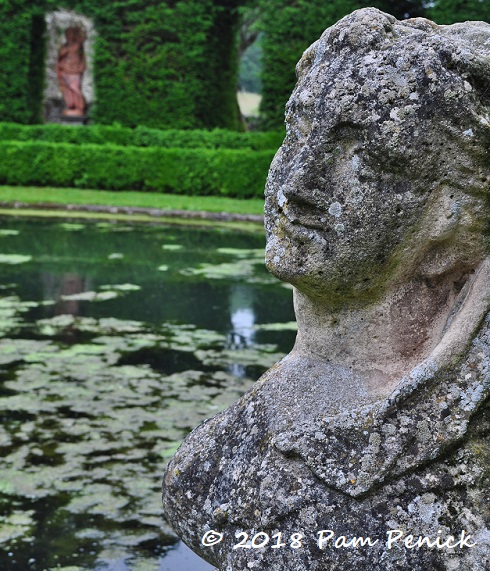
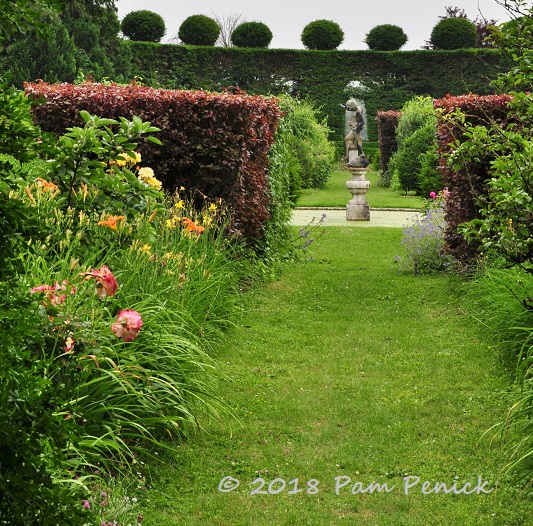
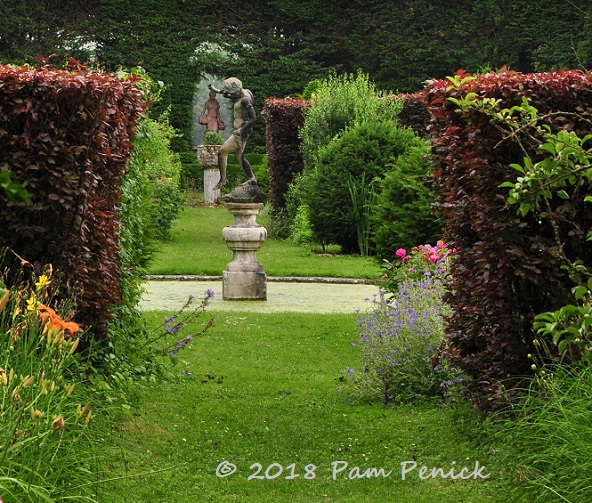
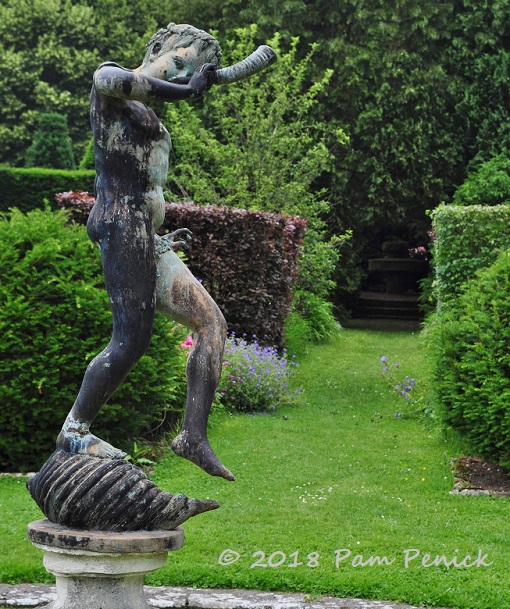
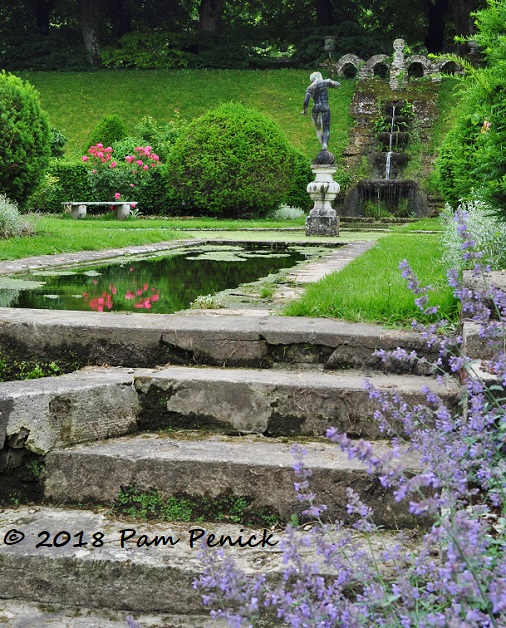
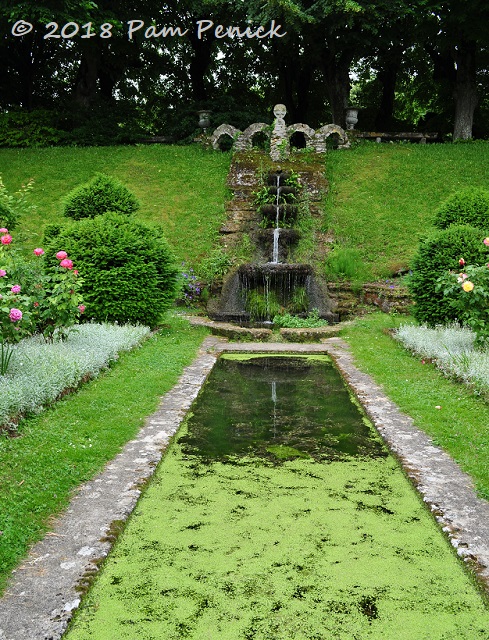
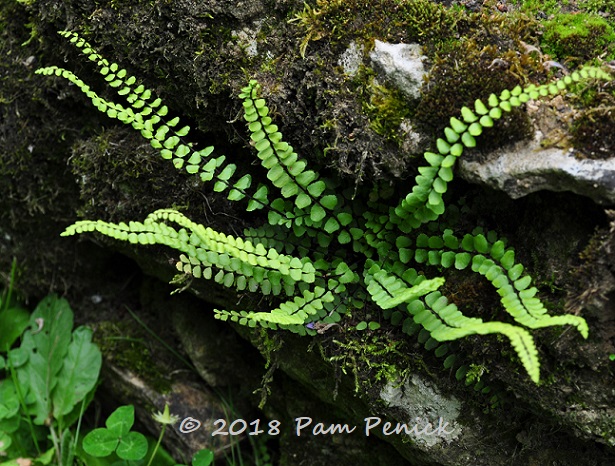
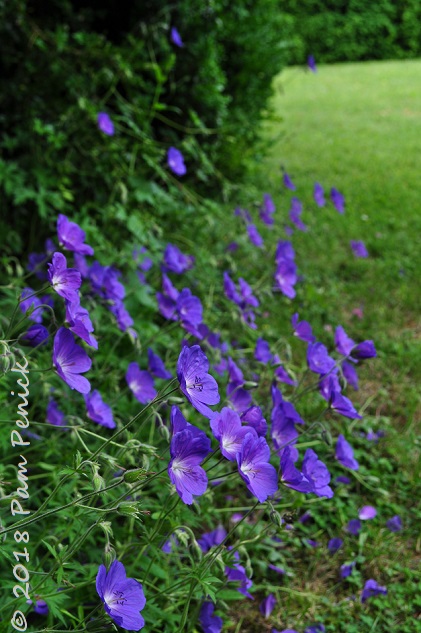
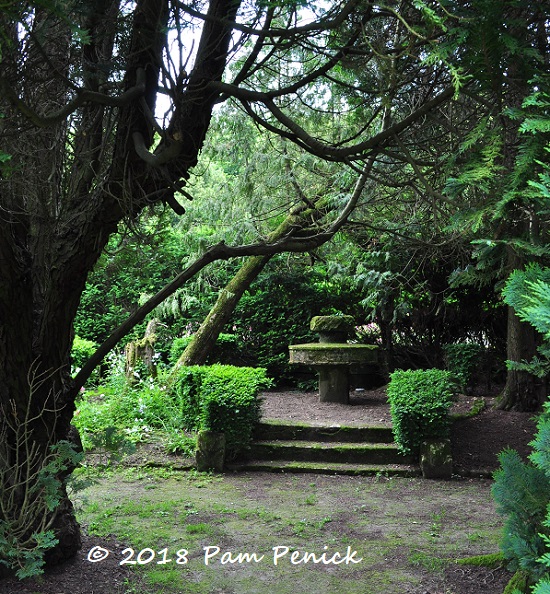
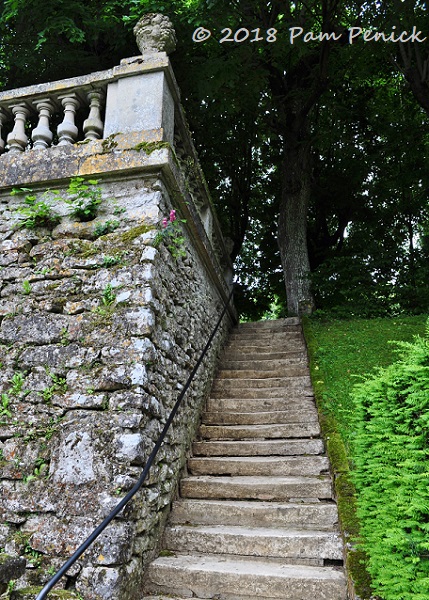
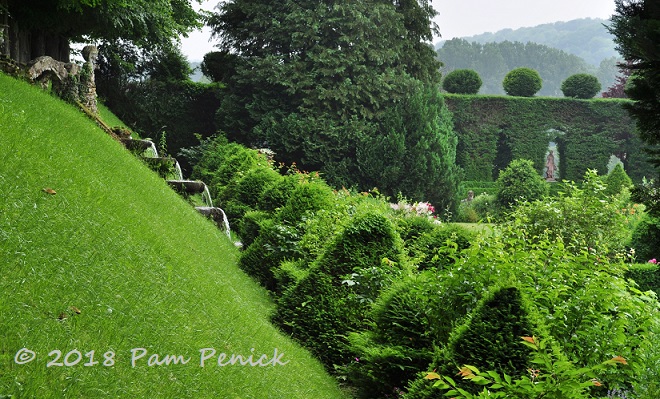
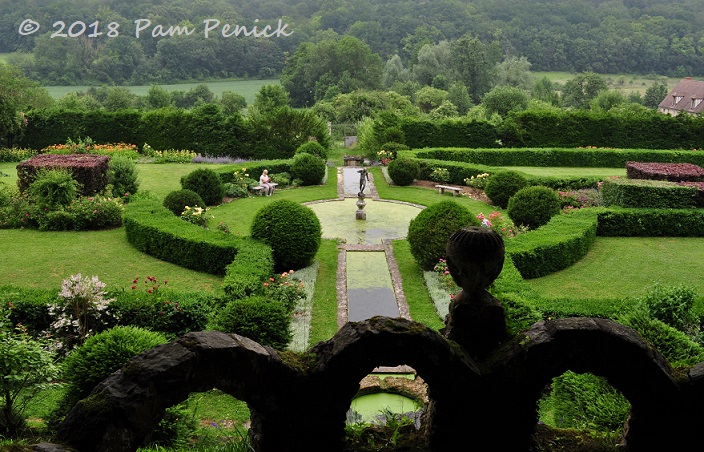
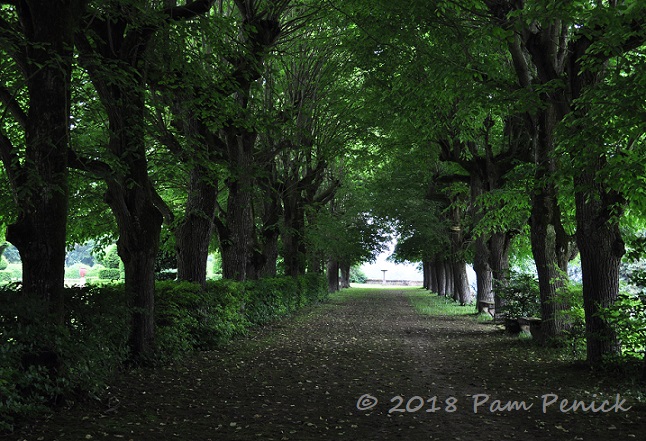
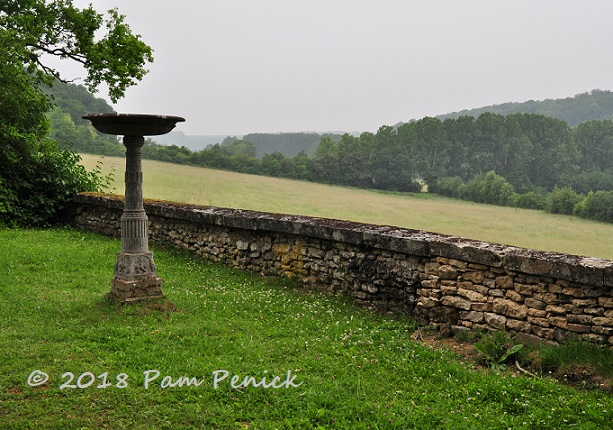
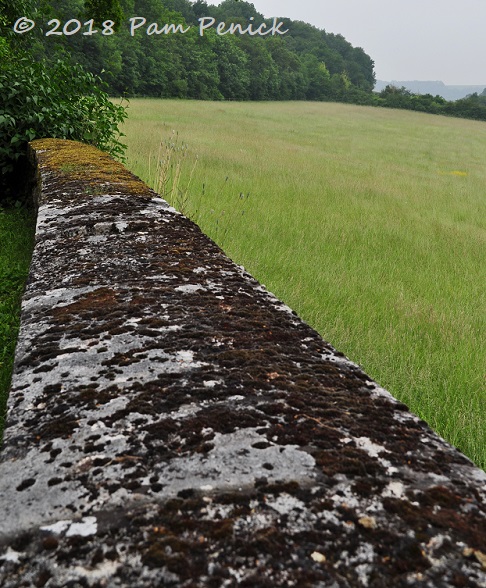
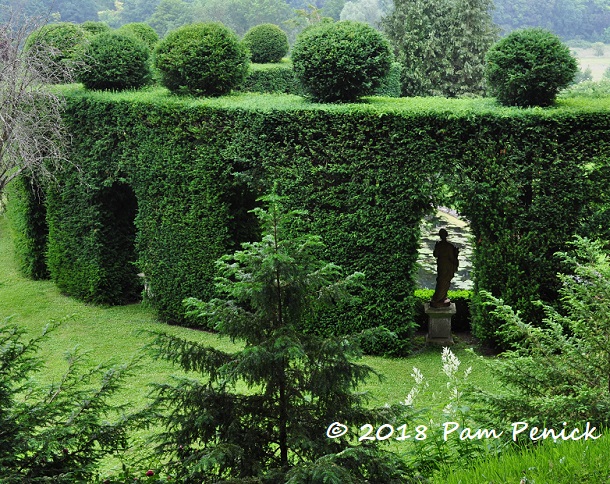
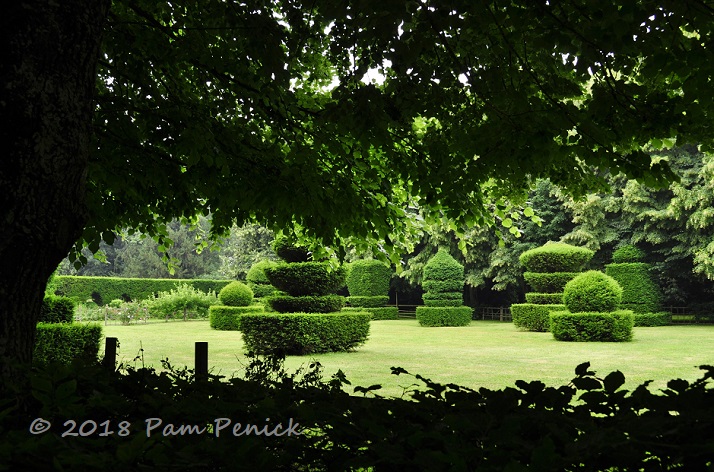
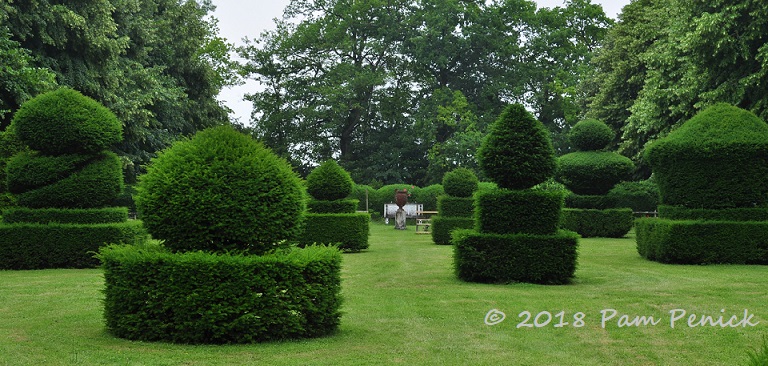
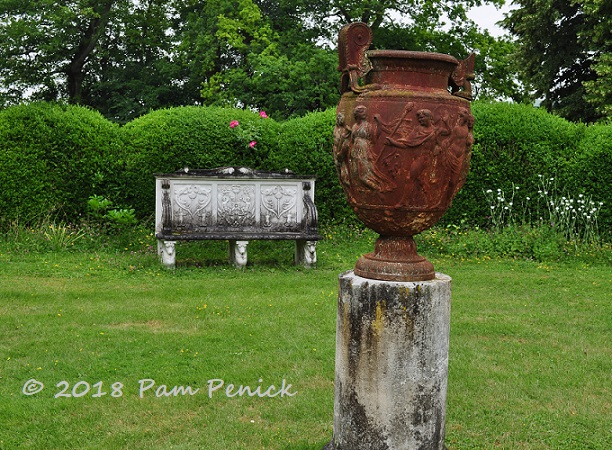
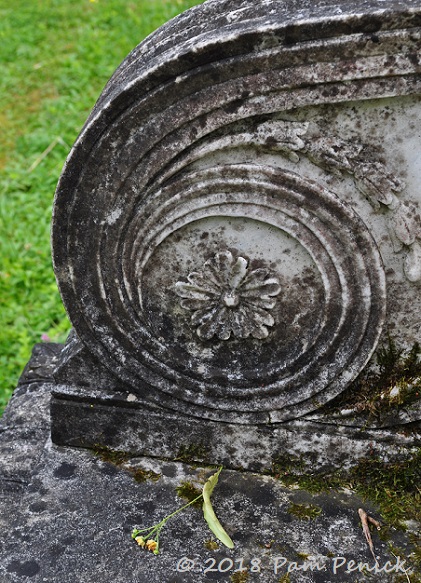
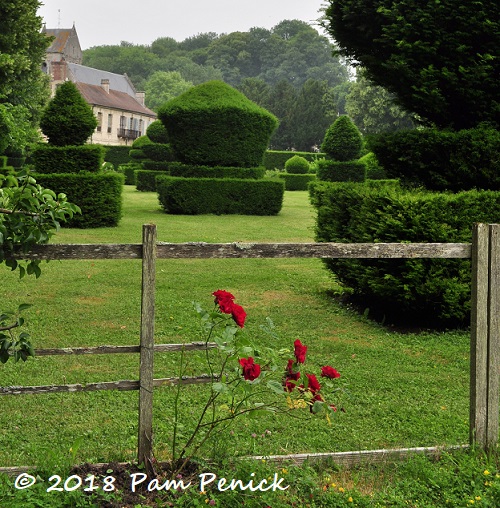
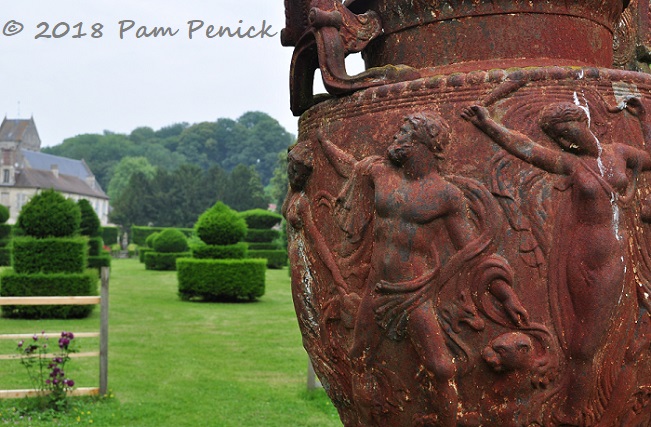
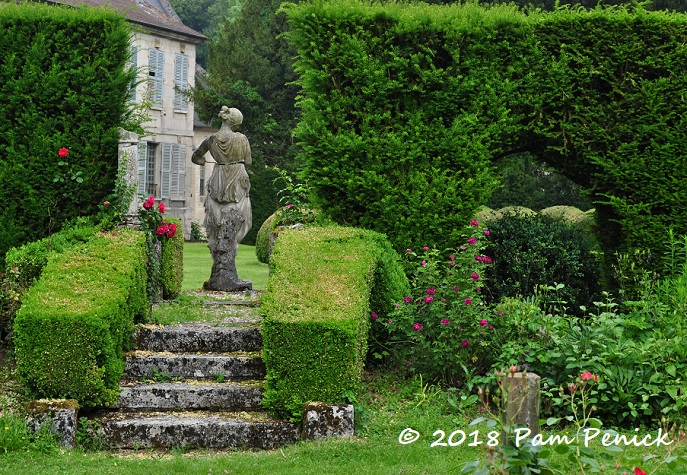
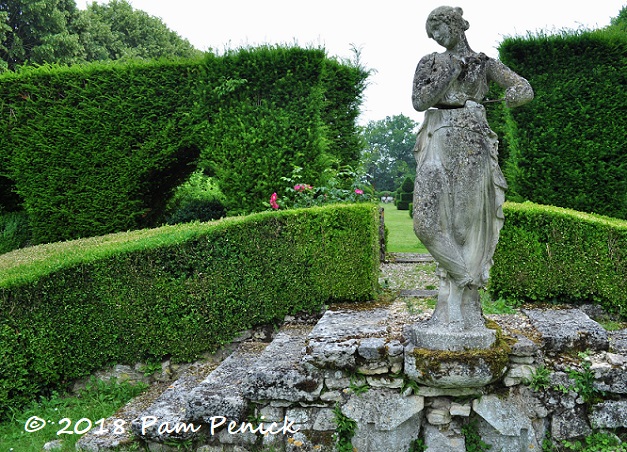
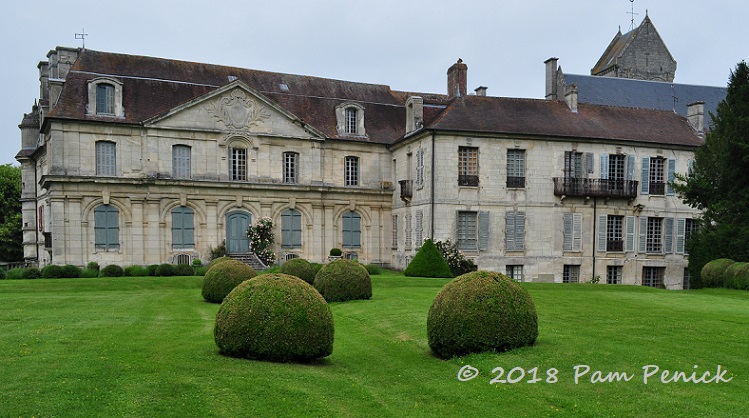
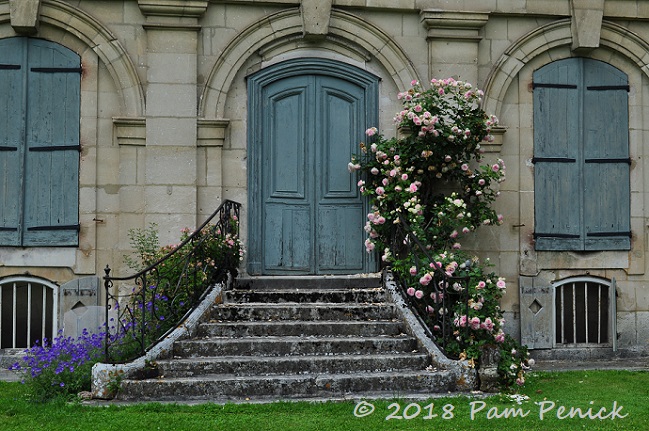
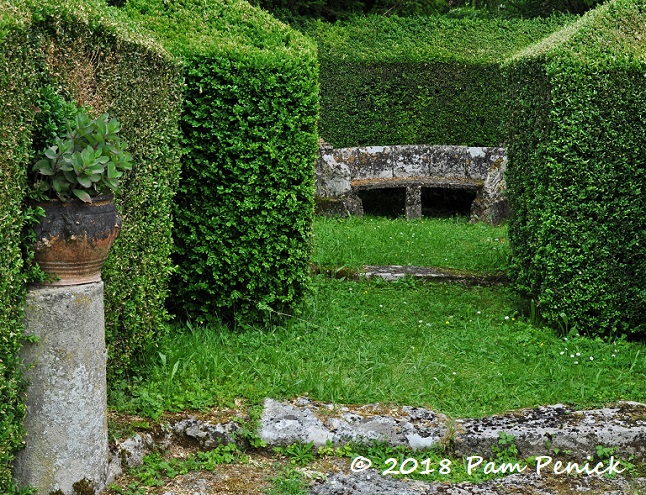
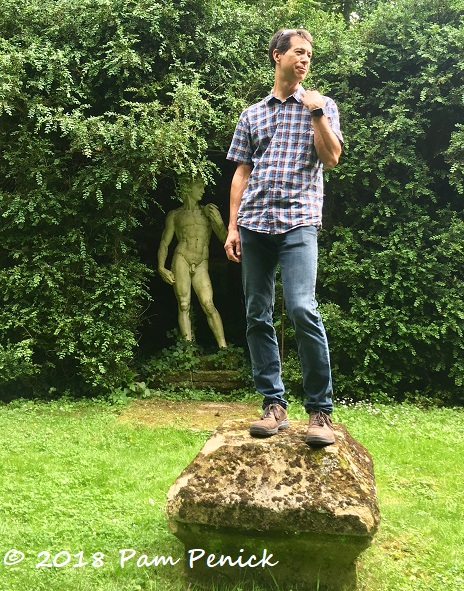
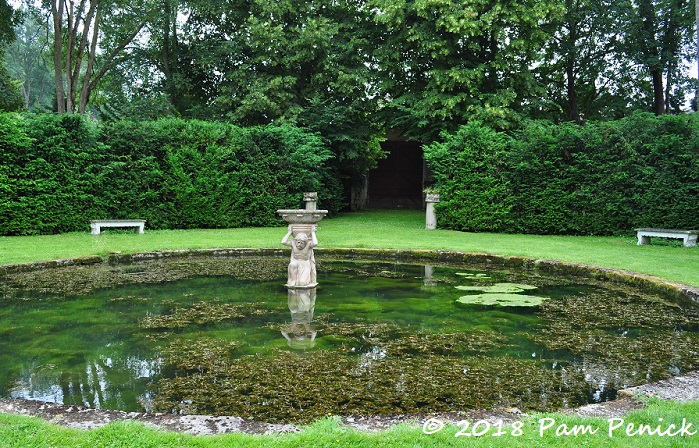
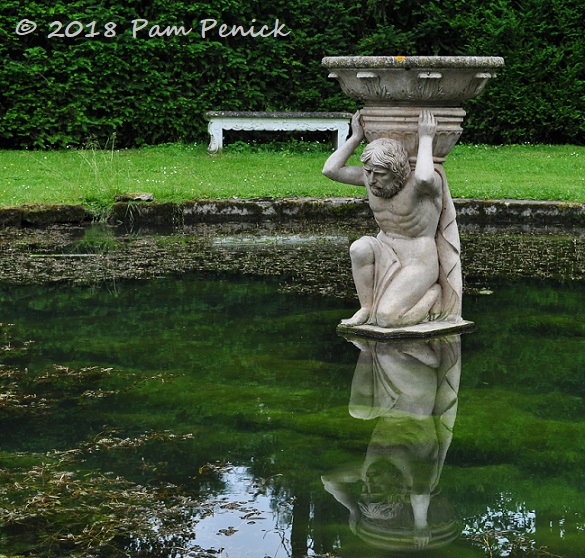
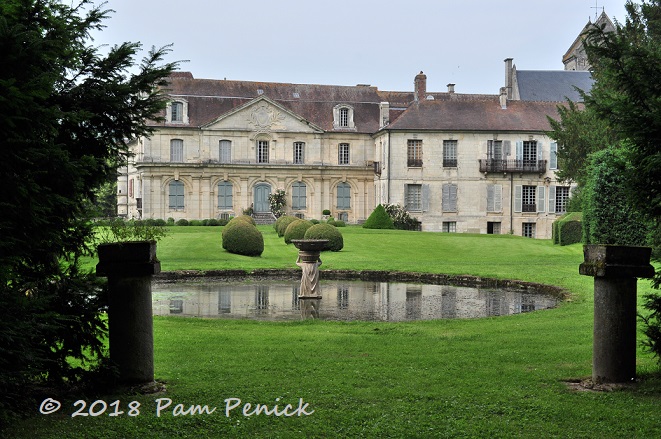
This is one handsome garden. I love those hedges with the balls on top. Those rock walls are something of my dreams. I know the are common in some places but I just love the look. Looking over the one wall to the pasture, open green space, they need some sheep or cows browsing to finish the picture. The ‘Davids’ make a cute photo.
Yes to sheep! That would complete the picture.
What a surprise…not just a garden but a spectacular one. Almost as though they are as common as those châteaux that litter the French countryside…
If I’d only known, I’d have been more eager to visit chateaux that day!
You visiting this garden was definitely meant to be! It feels like a step back in time, where you can imagine nobles dressed in their finest among the hedges and beside the pools.Your excellent pics and descriptive writing are always the next best thing to being there.
I am surprised you didn’t run into any gardeners, looks like tons of maintenance on the clipped hedges! Such an enchanting garden, so full of stories from the past, love that we can share a little of your fabulous trip. Oh and the pic of the 2 Davids was great!
I’m glad you enjoyed the tour, Heidi. And yes, you would think there would need to be a full-time gardener working out there.
While I’ve never been a fan of formal gardens, this one is undeniably beautiful. The photo of the 2 Davids is priceless!
He’s such a good sport.
This garden takes my breath away! Love that it is formal, yet relaxed….not sure how to explain it, but that’s the feeling it get. I tend to like informal better, but I feel like I’d never want to leave this one!
It occurred to me later the word I was searching for…lighthearted. This garden is lighthearted and joyful. I shared this post with several of my gardening friends and they loved it too.
I agree, Joyce. It’s a lighthearted formal garden, which I think a lot of people don’t realize can even be a thing. So often formal gardens are associated with a stuffy seriousness. Not necessarily, as this garden illustrates so well. Thank you for sharing my post with your friends!!
Definitely a garden for the wish list.
Yes, indeed. There are so many that we really have our work cut out for us, don’t we?